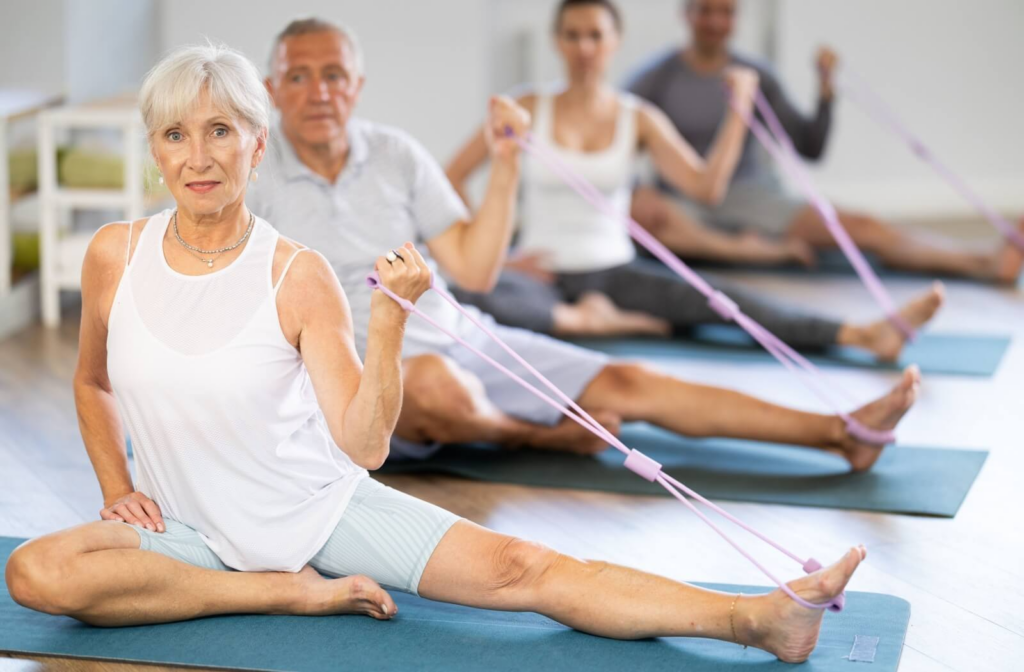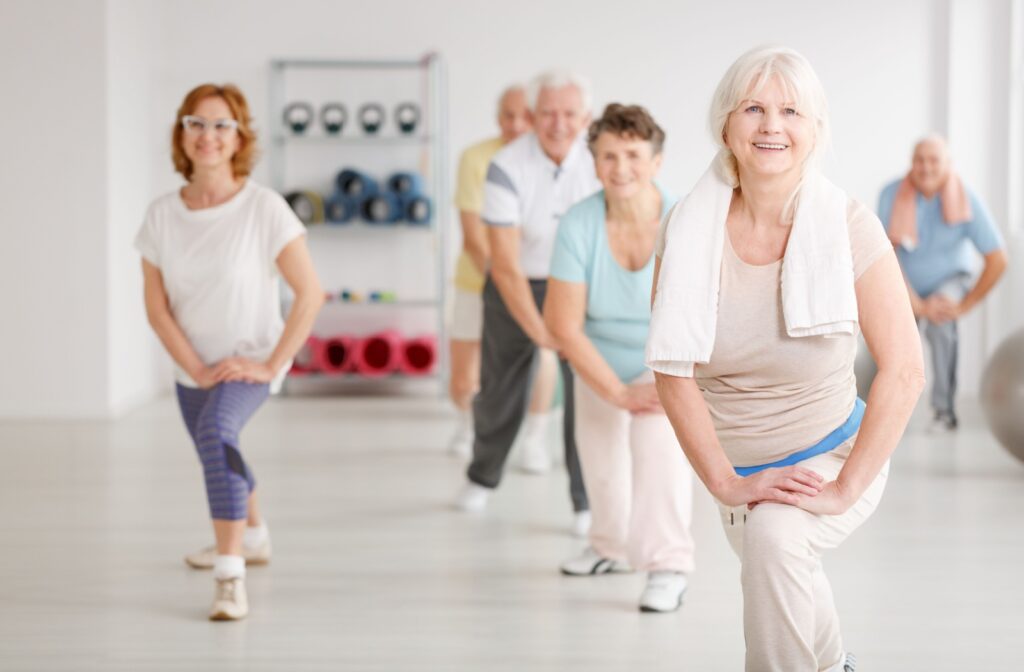Key Takeaways
- Most older adults benefit from 150 minutes of moderate aerobic activity per week, along with strength exercises and balance training.
- Regular exercise keeps your joints flexible, boosts energy, and strengthens bones to lower the risk of fractures.
- It also helps with stress relief, improved sleep, boosted confidence, and more social connections through group activities.
- Seniors should consider activities such as walking, gardening, dancing, and swimming to improve their cardiovascular health.
- Exercises such as resistance training, yoga, and tai chi can make daily life safer and more convenient.
Why Physical Activity Is So Important for Seniors
Staying active can look different for everyone, especially as we age. For some, it might mean morning walks through the neighborhood. For others, it could mean gentle stretching or dance classes with friends. No matter what it looks like, movement matters—it’s one of the biggest factors in helping a person stay independent.
Most older adults benefit from about 150 minutes of moderate aerobic activity per week. Seniors should also work strength exercises and balance training into their routine.
While this may seem like a lot, it’s much more manageable when broken down into smaller sessions. Even a few minutes of exercise every day can make a significant difference in sustaining your quality of life as you age.
Why Movement Matters
Regular physical activity is about more than just staying fit. It’s about improving your quality of life. Even light forms of physical activity can help with everyday tasks like carrying groceries or walking upstairs.
A regular routine can support stamina, posture, coordination, and energy throughout the day.
Meanwhile, active older adults tend to experience fewer falls, injuries, and chronic aches. With the right exercises, you can stay independent without worrying about a higher risk of falls.
The Benefits of Exercise for Seniors
Exercise offers a wide range of benefits for older adults. It doesn’t just support your body, either. It can uplift your emotional and cognitive health, too.
Benefits for the Body
Regular exercise offers significant physical benefits. It helps:
- Keep joints flexible and reduce stiffness
- Boost energy levels and combat fatigue
- Strengthen bones through weight-bearing activities
Daily movement helps keep you stronger and safer in your day-to-day life.
Benefits for the Mind
The mental benefits of exercise are just as vital. It helps:
- Release endorphins, which ease stress and anxiety
- Build confidence and self-worth by achieving fitness goals
- Encourage social connections through group activities
- Improve sleep quality, helping you feel more rested and refreshed
These can boost your quality of life and strengthen your mind.
Benefits for the Brain
There’s a strong connection between movement and cognitive health. Gentle exercise supports brain function and memory, and this makes it easier to stay sharp throughout the day.
Physical activity also increases circulation and sends more oxygen to the brain. Staying active helps with attention, focus, and reaction time. Over time, regular movement also supports memory improvement, so you can stay more engaged with your surroundings.
Senior-Safe Exercises to Support Healthy Aging
You don’t need to do intense workouts to see real benefits. In fact, simple movement done consistently is one of the most effective ways to stay healthy over time. It’s all about balancing your exercises to strengthen different parts of your body.
Aerobic & Cardio Activities
Cardio exercises are crucial for improving heart and lung health. Exercises that get your heart pumping can help you move around in your daily life and lower the risk of heart problems. Some excellent options include:
- Walking around your neighborhood or on a treadmill
- Gardening or light yard work
- Dancing in a group or solo
- Swimming or water aerobics
- Biking on flat terrain or using a stationary bike
These options are all excellent ways to strengthen your cardiovascular system.
Strength & Resistance Exercises
Strength training helps maintain muscle mass and bone density, which naturally decrease with age. These exercises also improve posture and coordination. Some good choices include:
- Bodyweight exercises like lunges and push-ups
- Pilates for core strength and flexibility
- Barre for toning and balance
- Weight training with dumbbells or resistance bands
Balance-Focused Movements
Adding balance exercises can help you feel safer and more stable in your daily life. Some great balance activities most seniors can easily add to their routine include:
- Yoga for flexibility, strength, & breathing
- Tai chi for coordination and focused motion
- Standing on one leg while brushing your teeth
- Side leg raises with a chair for support
- Heel-to-toe walking in a straight line
These exercises can each help make daily life more stable and safe.

Make Movement a Part of Daily Life
You don’t have to overhaul your entire routine to get more benefits from movement. Many forms of exercise can be worked naturally into your day, especially if you choose activities you enjoy.
Here are a few easy ways to add safe movement into your daily life:
- Take short walks after meals
- Stretch while watching TV or reading
- Do light chores around the house for activity
- Try a short online workout video
- Join a social group focused on movement
Adding even 10–15 minutes of physical activity each day can support joint health, boost your mood, and improve your sleep. Whether you choose to move on your own or with others, the goal is to stay consistent and listen to your body.
Support Your Wellness Through Movement
Regular movement supports your body, uplifts your mood, and helps you stay sharp and steady. It doesn’t take much—just consistency and a bit of creativity.
With the right support system, you can easily work towards the healthy lifestyle you deserve. And here at Fountains of Franklin Senior Living, we’re ready to help.
In our community, we believe in creating a lifestyle that gives you joy, flexibility, and wellness. Book a tour with us today to learn how we support wellness, independence, and healthy aging in everything we do.



